You may have noticed that climbing shoes come in men’s and women’s models. But what is the difference between them? And is it acceptable for men to wear women’s climbing shoes…?
The answer is yes, men can wear women’s climbing shoes. There is absolutely nothing wrong with wearing a women’s climbing shoe. Lot’s of male climbers have narrow feet and prefer to wear the female models over men’s.
It’s not rare to see male climbers in a pair of women’s solutions. This happens both at the climbing gym, the local crag and even in professional climbing competitions. Myself, I mostly wear women’s shoes because I have narrow feet and I’m quite light, making the women’s model the preferred choice.
Never has another climber approached me about it in a negative way. Climbers really don’t care what shoes you are wearing. Wearing women’s shoes is very normalized, even if they come in bright pink. 😉
This also works the other way of course. Just because women’s climbing shoes exist, doesn’t mean all women will fit best in a women’s shoe. Sometimes a men’s shoe is simply a better fit for your feet.
So ladies, don’t be afraid to test out men’s climbing shoes if you find that your feet aren’t right in women’s models.
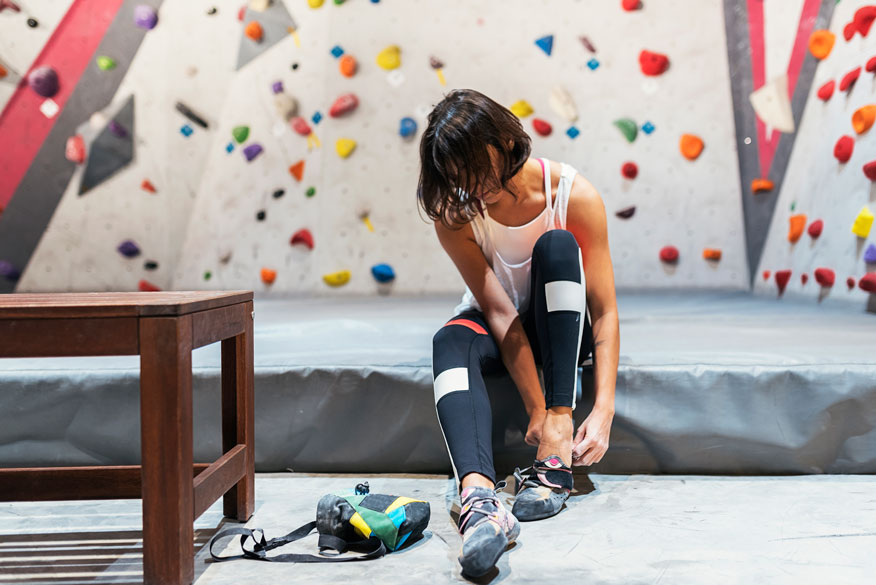
But why are climbing shoes gendered?
Originally, climbing shoes didn’t have any gender at all. Before the late 90s, every climbing shoe on the market was designed primarily with male feet in mind. They were all built on a last that catered towards the typical male feet: large, wide feet with a big toebox.
This made climbing shoes a pain to buy for anyone (including men) with more narrow features in their feet.
In the late 90’s, women’s climbing shoes were first introduced which were built on a last that resembled a typical women’s foot: narrow volume, high arch and a small heel.
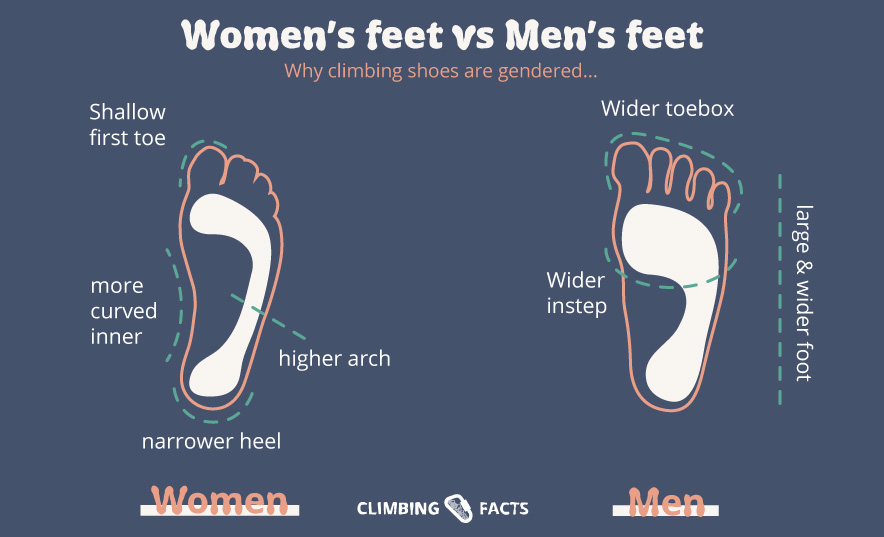
So that’s how gendered climbing shoes came to be in the first place. But why do we still need to gender climbing shoes in 2022?
Gendered climbing shoes are based on the average feet of both gender but it has long become clear that men can have narrow feet just like women can have wide feet.
It would make so much more sense for manufacturers to simply assign a ‘narrow fit’ and ‘wide fit’ label to their climbing shoes. If climbing shoes were genderless, men with narrow feet and women with wider feet would stop buying ill-fitting climbing shoes.
When asked about gendered shoes, big climbing brands have replies ready such as: “gendered climbing shoes make it easier for beginners to shop for shoes”.
While understandable, such a reply feels like a cop-out. If this were really the reason, why do they still apply genders to their intermediate and performance shoes?
In reality, climbing brands are old-fashioned and it will likely take a while for the big names to steer away from gendered-based shoes.
Some brands are catching on though. For example, Evolv has started steering away from gendered models in favor of creating an ‘LV’ model for their newer shoes.
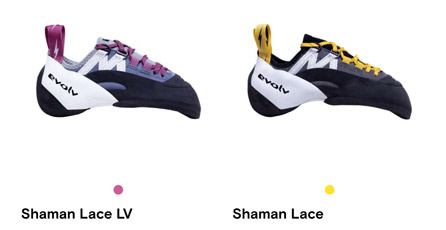
Butora has never had gender-specific shoes in the first place and instead assigns their shoes a ‘wide-fit’ or ‘narrow fit’ label to them.
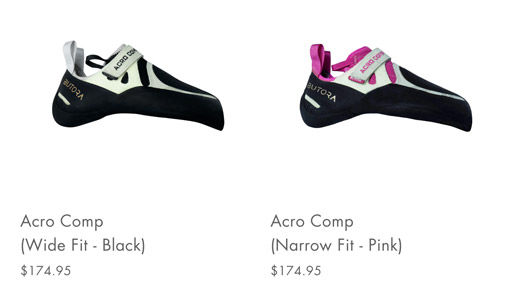
Even Scarpa has started experimenting with genderless climbing shoes. One example is the Scarpa Drago LV.
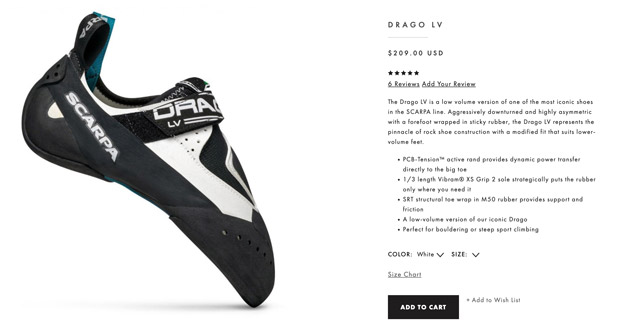
Who knows, maybe La Sportiva will catch on one of these days.
How men’s climbing shoes differ from women’s climbing shoes
Women’s climbing shoes are near identical in features as their male counterparts but they do come with some differences such as:
- Different last
- Different sizes
- Different material
- Different color palette
Different last
Women’s climbing shoes are built around a completely different last from their male counterpart.
What is a last??
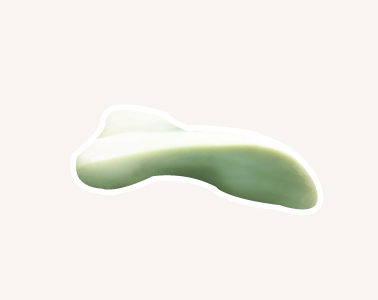
The last is the piece of plastic mold that the entire climbing shoe is built around. The last decides the shape of the shoe.
Lasts used for women’s climbing shoes typically have a more narrow profile, a smaller heel, and a higher arch.
Meanwhile, the last for men’s shoes have a higher volume, wider heel and larger toebox.
The last offers the biggest difference between male and female climbing shoes. If you have medium-sized feet, you would benefit greatly from testing out both male and female version of climbing shoes to see which best fit your feet.
Different material
Oftentimes, women’s climbing shoes use different rubber from their male counterparts. This is because based on averages, women are lighter than men and thus require less rubber to achieve the same sensitivity as heavier men.
For their women’s shoes, climbing manufacturers will often change the material of the outsole or the midsole.
For example, Scarpa Vapor V’s come with a Vibram XS Edge outsole whereas the women’s version comes with the softer Vibram XS Grip 2 outsole.
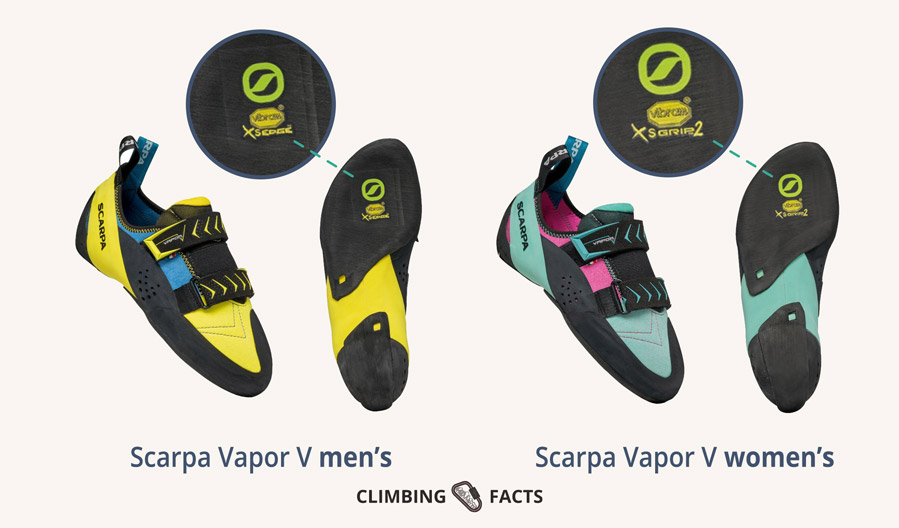
Similarly, the La Sportiva Otaki Women’s has a 0.3mm thinner midsole than the original Otaki. The shoe also comes 60 grams lighter than the original Otaki.
Again, climbing manufacturers are basing on averages. If you are lighter male (like myself), you might benefit from a female model over a male model, provided they fit your feet.
Different sizes
Another big difference between men’s and women’s climbing shoes is the sizes that they come in.
Men’s shoes tend to range from size 35EU to 46EU but women’s shoes are limited to sizes 33EU and 42EU.
This forms one of the biggest problems with gendering climbing shoes. Men with small, narrow feet can simply wear women’s shoes. But what about men with large, narrow feet? They are stuck to men’s climbing shoes, even if their feet don’t fit well.
Different color palette
Most climbing shoes come in one style and that’s it. The women’s variant always has a different color scheme from the men’s version and in most cases, the women’s variant simply looks better.
Or at least that’s my personal opinion.
Especially when you look at La Sportiva and Scarpa, the women’s shoes always look better. While the men’s shoes almost always feature that ugly yellow, the women’s shoes tend to be more subtle.
Just look at the Scarpa Instinct’s, the women’s version looks so much better, no?
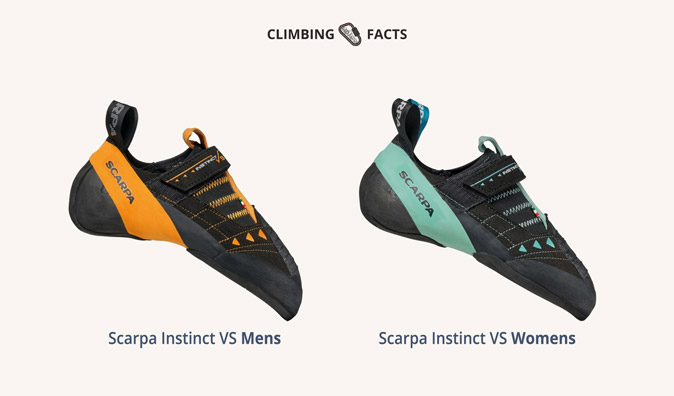
Or what about the La Sportiva Solutions?
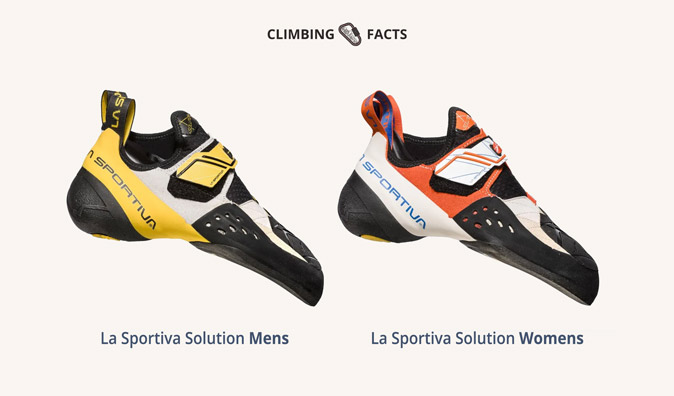
This is my personal opinion of course, but if my climbing friends are any indication, most men and women favor the color palette of women’s shoes over the men’s.
Womens vs Mens – Which climbing shoes should you get?
You really shouldn’t look at the gender of a climbing shoe. It doesn’t matter at all. Instead, you should buy the shoe that best fits your feet.
In many climbing stores, the store employees don’t even tell you that the shoe you are fitting are actually women’s shoes. They know everyone’s feet are different and shoes shouldn’t be bought based on their gender.
Instead, you should figure out whether you have narrow, medium, or wide feet based around your foot size.
Figure out whether you have narrow or wide feet
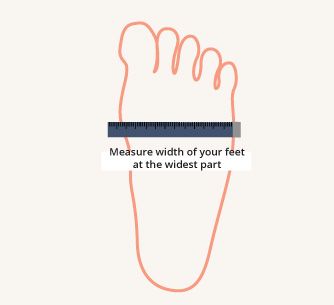
- Place your foot on a piece of A4 paper
- Draw the outline of your feet
- Measure the distance between the widest part of your foot
- Compare with the table below
| EU | Narrow | Medium | Wide |
| 35 | 2.8″ | 3.2″ | 3.55″ |
| 36 | 2.95″ | 3.3″ | 3.7″ |
| 37 | 3.05″ | 3.45″ | 3.8″ |
| 39 | 3.2″ | 3.55″ | 3.95″ |
| 40 | 3.3″ | 3.7″ | 4.05″ |
| 41 | 3.45″ | 3.8″ | 4.2″ |
| 42 | 3.55″ | 3.95″ | 4.3″ |
| 44 | 3.7″ | 4.05″ | 4.45″ |
Conversions: US to EU
Men’s sizes
| EU | 36 | 37 | 37,5 | 38 | 38,5 | 39 | 39,5 | 40 | 40,5 | 41 | 41,5 | 42 | 42,5 | 43 | 43,5 | 44 |
|---|---|---|---|---|---|---|---|---|---|---|---|---|---|---|---|---|
| US | 4,5 | 5 | 5,5 | 6 | 6,33 | 6,5 | 7 | 7,5 | 7,66 | 8 | 8,5 | 9 | 9,5 | 10 | 10,33 | 10,5 |
Women’s sizes
| EU | 35 | 35,5 | 36 | 37 | 37,5 | 38 | 39 | 39,5 | 40 | 41 |
|---|---|---|---|---|---|---|---|---|---|---|
| US | 4,5 | 5 | 5,5 | 6 | 6,5 | 7 | 7,5 | 8 | 8,5 | 9 |
- Do you have wide feet? -> You will likely fit best in men’s shoes
- Do you have medium feet? -> Try both the male and female versions of climbing shoes to find the best fit
- Do you have narrow feet? -> You will likely fit best in women’s shoes
Sometimes, however, it’s not as simple as that. Just because your feet are wide, doesn’t mean men’s or ‘high volume’ shoes are the best fit for you.
You might have a higher arch, lower instep or a smaller heel (or all three). In this case, you may benefit from trying on some women’s or ‘low volume’ shoes that are built around a wider last. This way, you can still get a wider fit but with low volume features such as a smaller heel.
For future shoe shopping, you might benefit from knowing whether you have low or high volume feet.
Low Volume vs High Volume feet
Volume refers to the amount of vertical space a foot takes up in a climbing shoe. A typical wide volume foot has a high instep, high midfoot, and a wide circumference around the ball of the foot.
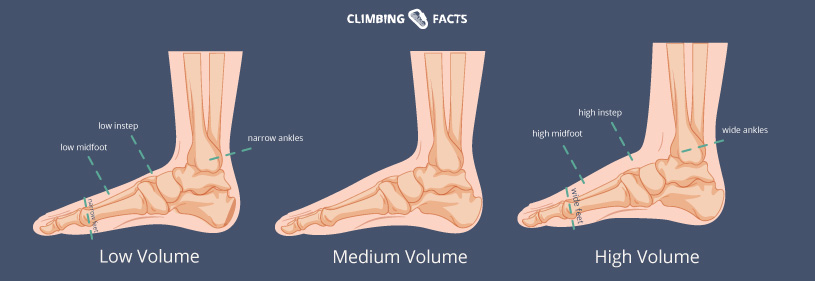
Conclusion
There is absolutely nothing wrong with wearing opposite gendered climbing shoes. Lot’s of female climbers wear men’s shoes and lot’s of male climbers wear women’s shoes. It all depends on the features of your feet.
Men with wide feet will likely be fine in most men’s climbing shoes. However, men with narrow feet might have to opt for women’s model instead. Similarly, it might be beneficial to look at a women’s model if you are noticing dead space in the heel.
Women on the other hand who experience dead space in the arch, a toebox that is too tight or painful heels, might want to try on men’s climbing shoes.
Continue Reading
More articles on Climbingfacts
- Indoor Bouldering Basics: intro to gym climbing
- Tips for short climbers
- Complete Guide to Bouldering Grades (& conversions)
- How to start and finish a boulder problem
- Can I get abs from climbing?
- Bouldering vs rock climbing
- How often you should go bouldering per week
- Why bouldering is a good full-body workout
- Climbing 101: what is cutting feet?
- How long does it take to progress in bouldering?
- How much does it cost to start bouldering?
- What to wear indoor bouldering
- How much of a bouldering wall can you use?
- Should climbing shoes hurt?
- How many climbing shoes do you really need?
- Yoga for climbers
- Core workout for climbers


